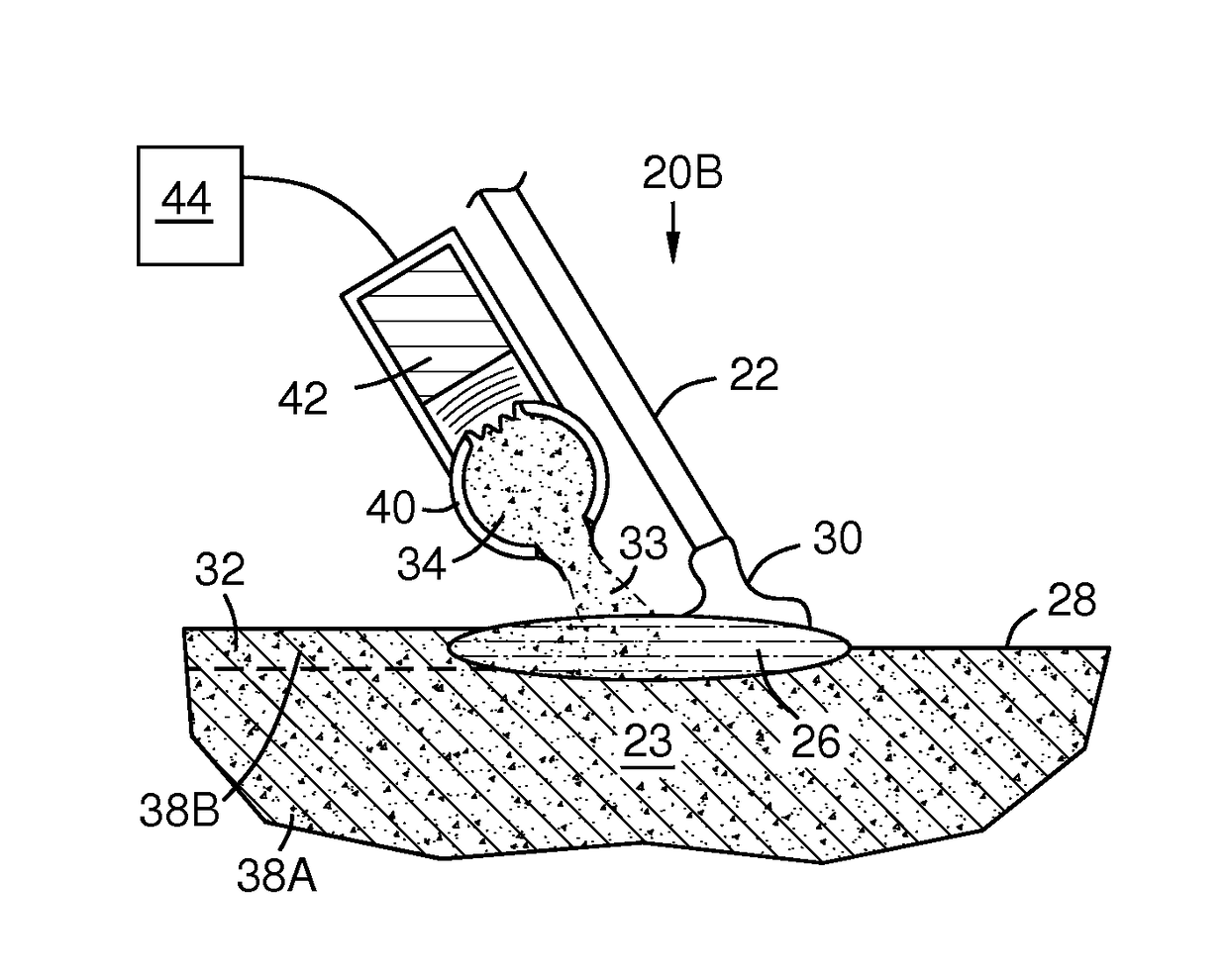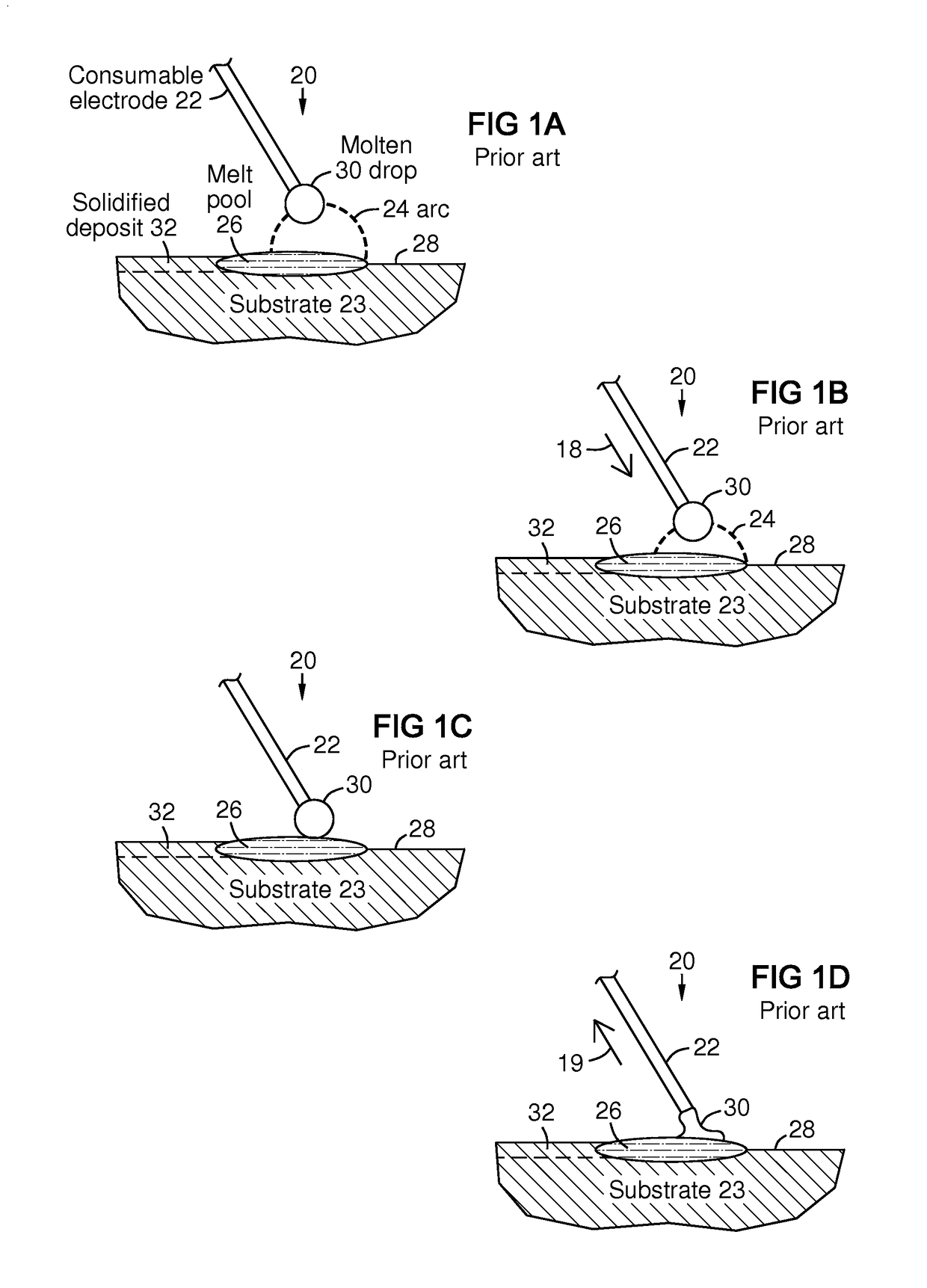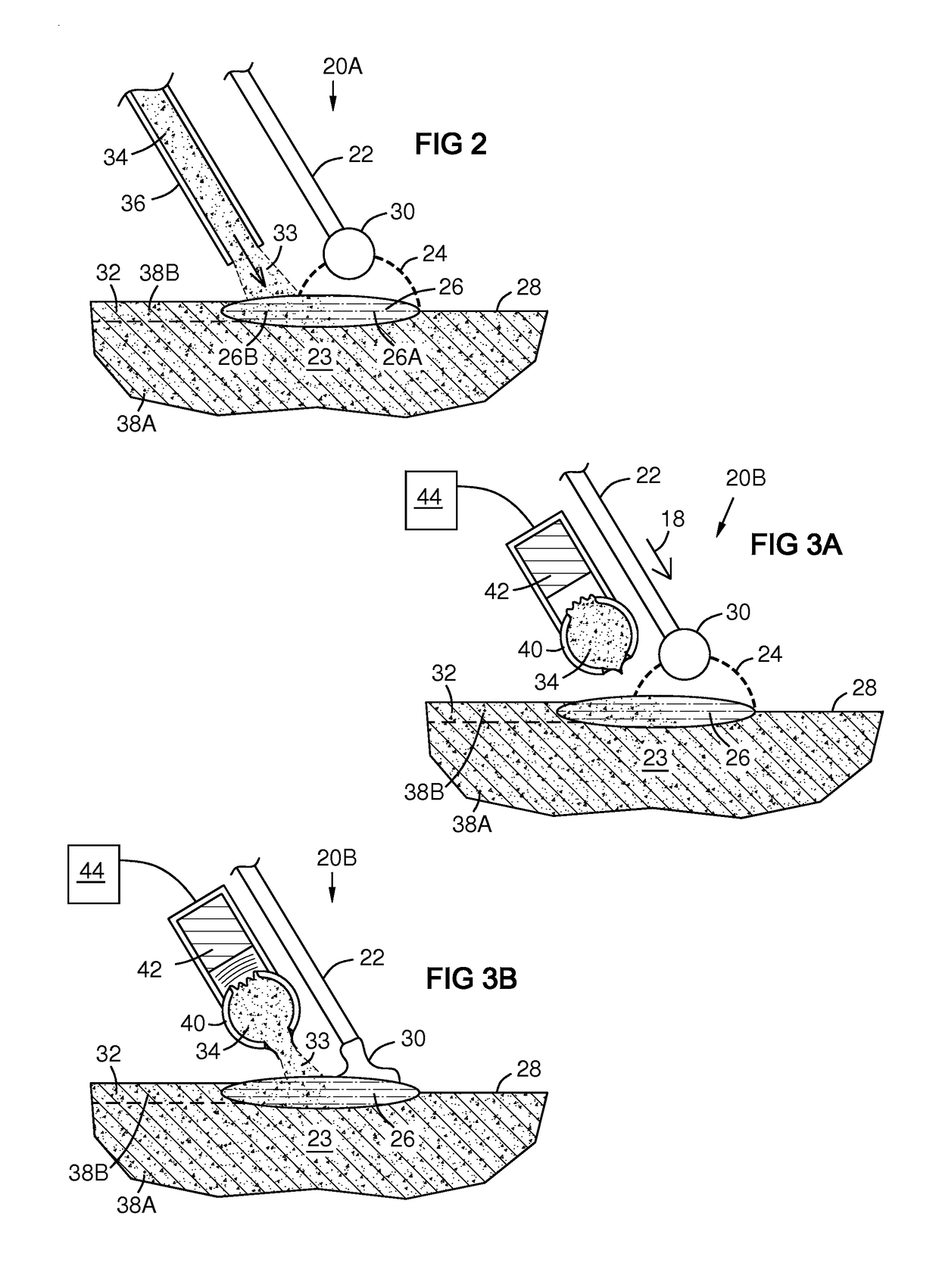Formation and repair of oxide dispersion strengthened alloys by alloy melting with oxide injection
a technology of oxide dispersion and alloy, which is applied in the field of metal component fabrication and repair, can solve the problems of uneconomical processing, significant loss of strength, and difficult weld and repair of ods alloys, especially superalloys,
- Summary
- Abstract
- Description
- Claims
- Application Information
AI Technical Summary
Benefits of technology
Problems solved by technology
Method used
Image
Examples
Embodiment Construction
[0014]FIG. 1A-1D illustrate basic apparatus and steps in a known cold metal transfer process 20. In FIG. 1A, a consumable electrode 22 approaches an electrically conductive substrate 23, establishing an arc 24 that melts a melt pool 26 on a surface 28 of the substrate and creates a melt drop 30 of alloy filler material on the electrode tip. The melt pool solidifies into a deposit 32 on the substrate. In FIG. 1B the consumable electrode 22 is advanced 18 toward the melt pool. In FIG. 1C the melt drop 30 touches the melt pool, extinguishing the arc. Electrical current is prevented from spiking during the short circuit by a controller (not shown). In FIG. 1D the melt drop 30 adheres to the melt pool, and the electrode 22 is retracted 19. This pulls the drop 30 off of the electrode into the melt pool by surface tension, thus adding the drop as alloy filler material to the melt pool. This technology minimizes spatter and excess heating compared to other arc welding techniques, while prov...
PUM
| Property | Measurement | Unit |
|---|---|---|
| first energy | aaaaa | aaaaa |
| melting point | aaaaa | aaaaa |
| energy | aaaaa | aaaaa |
Abstract
Description
Claims
Application Information
 Login to View More
Login to View More - R&D
- Intellectual Property
- Life Sciences
- Materials
- Tech Scout
- Unparalleled Data Quality
- Higher Quality Content
- 60% Fewer Hallucinations
Browse by: Latest US Patents, China's latest patents, Technical Efficacy Thesaurus, Application Domain, Technology Topic, Popular Technical Reports.
© 2025 PatSnap. All rights reserved.Legal|Privacy policy|Modern Slavery Act Transparency Statement|Sitemap|About US| Contact US: help@patsnap.com



